Precisely 35 years ago, on August 24, 1984, Barry Conyngham’s opera Fly was premiered by the Victorian State Opera. At the time, it was the first Australian opera to be presented on the stage of the State Theatre of the Victorian Arts Centre.
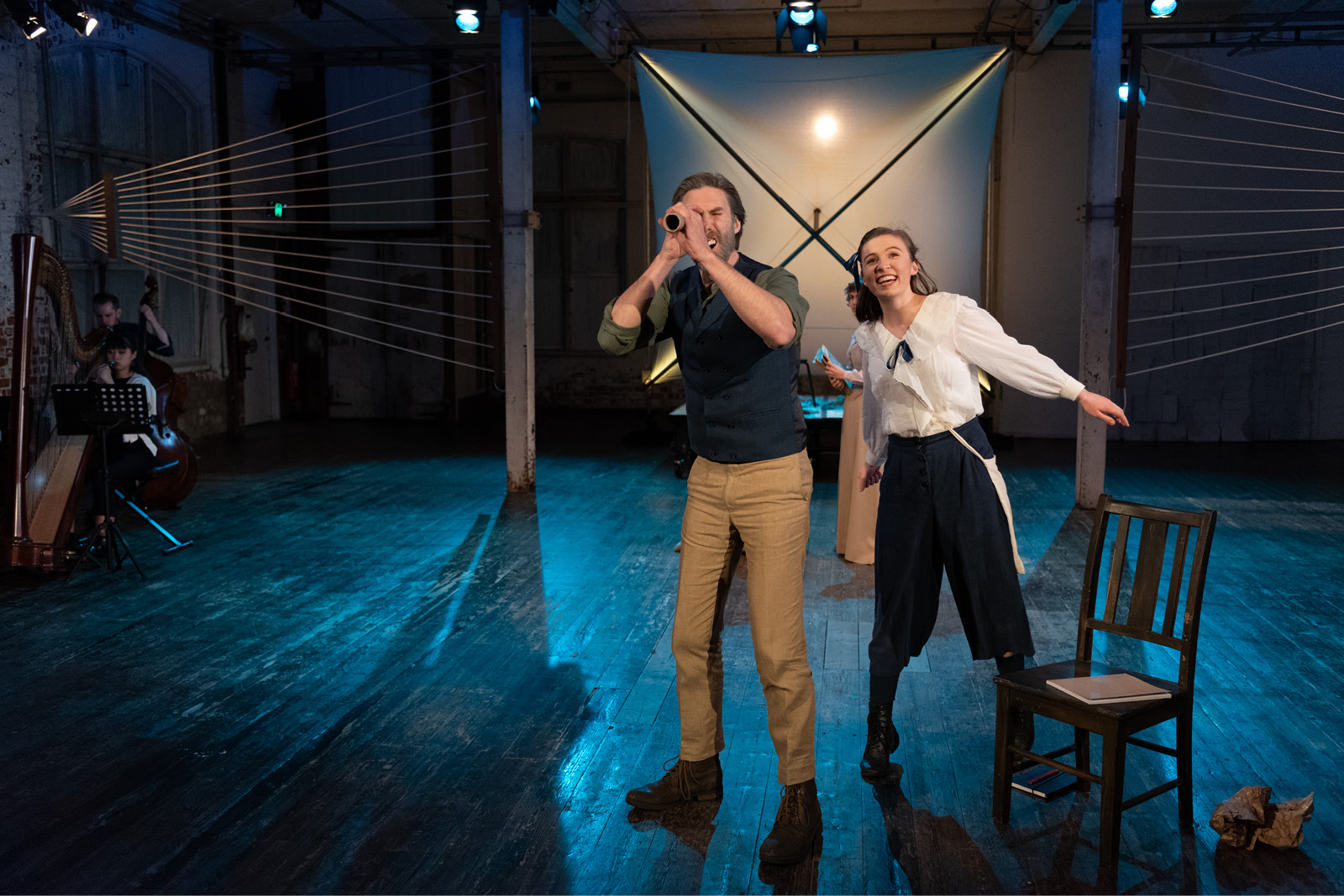 Sam Roberts-Smith and Lisette Bolton in Lyric Opera of Melbourne’s Fly. Photo © Lachlan Woods
Sam Roberts-Smith and Lisette Bolton in Lyric Opera of Melbourne’s Fly. Photo © Lachlan Woods
Fly is the story of the Australian aeronautical pioneer and inventor Lawrence Hargrave (1850-1915), the man immortalised on our first $20 note. A large stretch of scenic coastal road between Sydney and Wollongong has also been named after him; there is usually quite a crowd at the cliffs near Stanwell Park where Hargrave flew his kites and machines into the air. Hargrave’s story – also the subject of the 1988 opera by Nigel Butterley – is one of frustration at the pig-headedness of Australian bureaucracy, near-despair at lost opportunities and lack of recognition. Why we continue to return to our defeats and failures (e.g. Eureka, Gallipoli, Burke and Wills, Leichhardt etc.) as subjects for operas or other musical settings has long bemused international visitors. “Myths in reverse,” the expatriate poet Peter Porter once wrote, “with an ever-changing loan collection.”
Now, on the eve of Barry Conyngham’s 75th birthday, his opera has taken flight once more. This time, it is produced by Lyric Opera of Melbourne, a small but earnest enterprise directed by conductor Pat Miller. For Miller, mounting new productions of neglected Australian works – among his recent successes was the Australian premiere production of Malcolm Williamson’s Our Man in Havana – is a long-standing passion. A new production of Fly has been a labour of love for the 39-year-old Melbourne-born conductor for several years.
In return, Conyngham has revisited Fly as a chamber opera, reducing its cast to six singers and ten instrumentalists, including three keyboard players, two of whom play electronic instruments emulating brass and strings. A new character, the young Hargrave, has been introduced, otherwise the text remains the same, likewise the duration, just under 90 minutes played without an intermission.
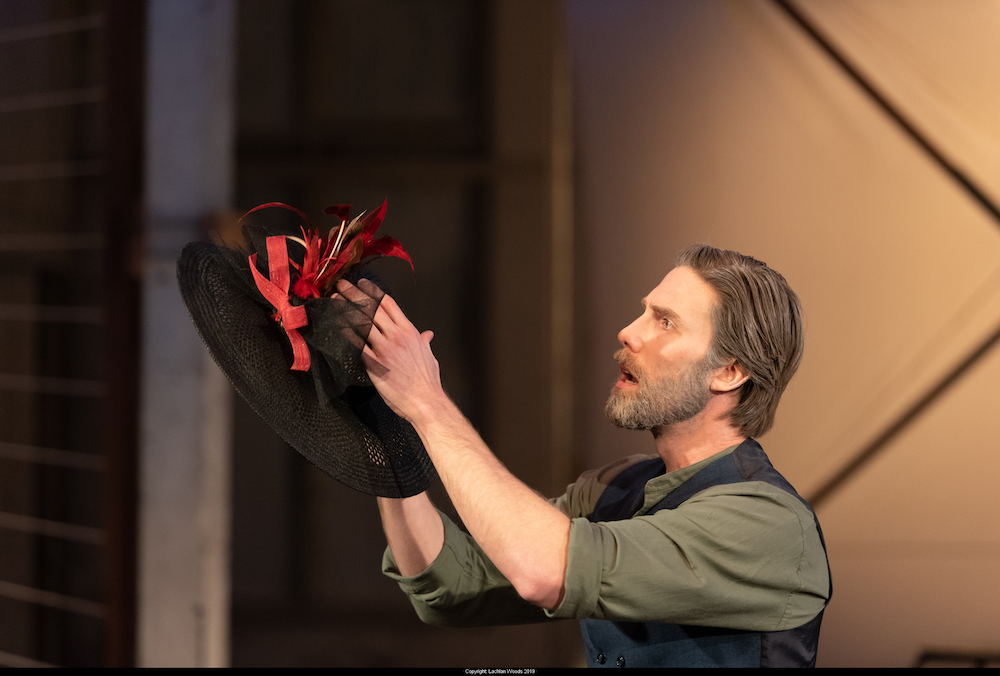 Sam Roberts-Smith in Lyric Opera of Melbourne’s Fly. Photo © Lachlan Woods
Sam Roberts-Smith in Lyric Opera of Melbourne’s Fly. Photo © Lachlan Woods
The performance space is appropriately modest. Fortyfivedownstairs is given over to not-for-profit arts organisations, and is buried – literally! – under three flights of stairs below the Little Flinders Street entrance. Reclaimed from the mid-19th century, it could have been an inn or alehouse, all bleached bare walls and rough-hewn floorboards, a low ceiling and not particularly resonant acoustic. On this occasion, an audience of around 200 was seated in rows along one wall, whilst the instrumentalists were divided into two units on either side walls.
The geography of the room created an allusion of space and depth of field which stage director Lara Kerestes used sparingly, but effectively. Her characters moved freely and swiftly, unencumbered by props or scenery. The set design by Tom Petty was similarly minimal, a single platform wheeled around to become a boat, and the occasional chair. A sail on the back wall suggested the quasi-religious wall art of Leonard French. Webs of rope alluded to the outlines and construction of that magnificent man’s flying machines. Richard Vabre’s lighting design was also understated, serviceable with occasional subtleties. Most of the action was set around Sydney Harbour in the pre-First World War period. Nathan Burmeister’s costumes were time-neutral and effectively anonymous.
There are only two elements of real colour which intrude on this otherwise muted, brown/beige ambience: the khaki green of a digger’s slouch hat and the wild blood-red feather in a hat purchased by Hargrave’s wife are instantly startling.
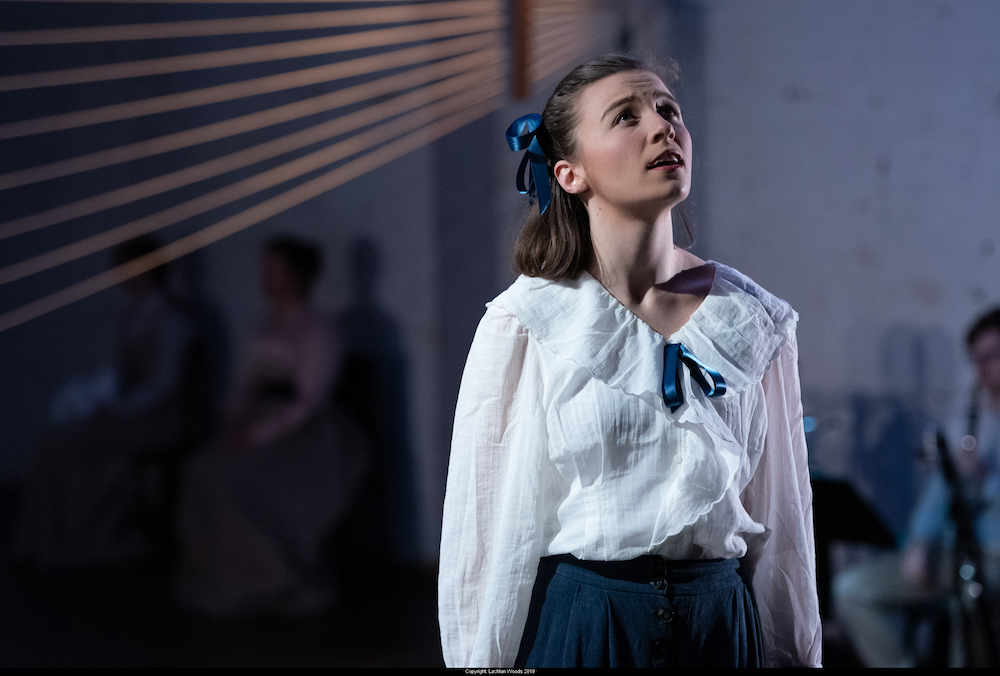 Lisette Bolton in Lyric Opera of Melbourne’s Fly. Photo © Lachlan Woods
Lisette Bolton in Lyric Opera of Melbourne’s Fly. Photo © Lachlan Woods
First and foremost, it is the music that carries this production. In its contraction to chamber orchestra, Conyngham’s new score loses little of its sweep and orchestral atmospherics. Its tiny four-note patterns run like rivulets through the musical landscape. Signature touches, like the waltz and gymnopedie, animated by rippling harp lines, recall moments from Southern Cross, the double concerto for violin and piano written only a year or so earlier.
Conyngham’s newly aerated orchestration supports and even nurtures the vocal lines. Unlike several contemporary Australian operas seen recently, Conyngham is never shy of producing memorable melodies. These follow and enhance the contours of the text and are gratifying to experience and gracious to sing.
In his operatic works, Conyngham has been blessed in having two master librettists. The late Murray Copland provided the libretto for Fly and the Lismore-based writer Janis Balodis wrote texts for later pieces like Electric Lenin (2006) and Fix (2014), a concert piece based on the life and demise of Brett Whiteley.
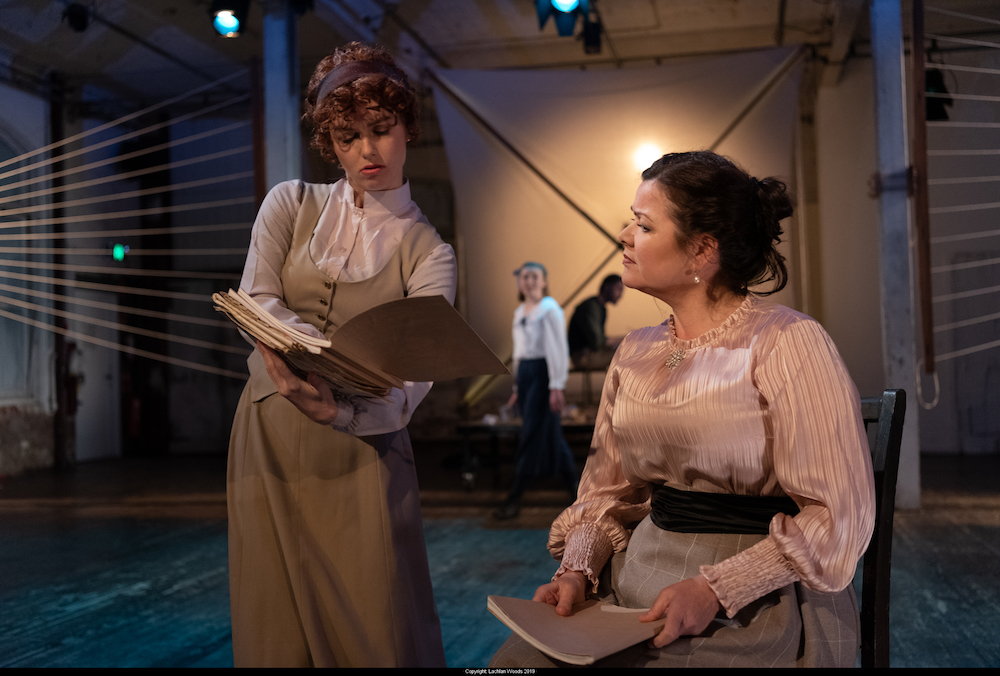 Shakira Dugan and Caroline Vercoe in Lyric Opera of Melbourne’s Fly. Photo © Lachlan Woods
Shakira Dugan and Caroline Vercoe in Lyric Opera of Melbourne’s Fly. Photo © Lachlan Woods
At that first airing of Fly, in 1984, I recall marvelling at the poise and luminosity of Copland’s lines, but today they sound somewhat over-written and even overwrought. There is only one quartet, at the very end, as the Hargrave family mourns the loss of their son and brother at Gallipoli. The drama relies heavily on dialogues, some of which – especially the confrontation between the young Hargrave and the Italian aristocrat-explorer Luigi Maria d’Albertis on the expedition up the Fly River in New Guinea – could be shorn by several minutes. With minimal stage action accompanying such moments, they sometimes become a kind of shouted duel, contributing little to the propulsion of the drama.
Amongst the small cast, the women prevailed. Mezzo-soprano Caroline Vercoe, as Hargrave’s socially ambitious wife Margaret, was the most vocally secure and dramatically persuasive figure. Soprano Lisette Bolton brought a crystalline purity and airy lightness to the role of Olive, the younger Hargrave daughter. Her opening declaration – “Fly! Fly! Fly!” – was truly thrilling. As her sibling Meg, mezzo-soprano Shakira Dugan delivered a darker, nasal tone to create a more hesitant, earth-bound foil to her sister’s ebullience.
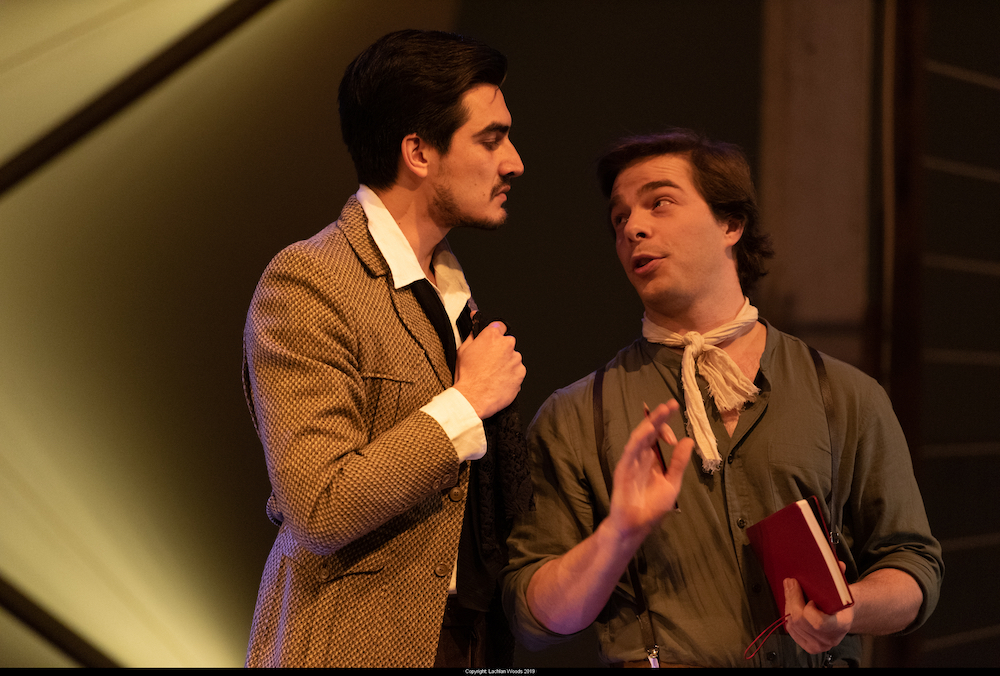 Cameron Taylor and Cameron Sibly in Lyric Opera of Melbourne’s Fly. Photo © Lachlan Woods
Cameron Taylor and Cameron Sibly in Lyric Opera of Melbourne’s Fly. Photo © Lachlan Woods
Overall, the men fared less well. As Lawrence Hargrave, baritone Sam Roberts-Smith has a big baritone voice and commanding stage presence, both impressive in other circumstances, no doubt. But here he seemed to lack the capacity to internalise his role, to allow us inside Hargrave’s tormented mind and fractured spirit. Similarly, lyric tenor Cameron Sibly as the younger Hargrave cut a strapping figure with few variations of timbre or dynamic. His exchanges with baritone Cameron Taylor, as the oily and self-possessed Italian explorer in New Guinea, became little more than shouting matches.
There can be no doubt that all six singers will grow in vocal and dramatic ability as they continue to explore repertory such as companies like Lyric Opera of Melbourne puts before them. Still, after almost 90 minutes, they had taken us on a journey inside their characters and our history.
Conyngham’s music was in safe hands under conductor Pat Miller. His clear, understated, well-framed unfurling of the gorgeous tapestry of this music lent an air of calm coherence to what could have been a chaotic, seat-of-the-pants experience. Miller’s efforts in mounting this opera, and other Australian pieces before it, were persistent, unflinching and heroic. From the outset, it was clear that this was a barely-funded and, by necessity, bare-bones enterprise. Miller and his brave colleagues set all that aside and focussed on the music. In the end, they created an experience that was enriching and ennobling for all.
In recent years, there seems to have been a spate of commissions for new works by our opera and theatre companies. How many of these, one wonders, will fall by the wayside? It’s cheering to see more adventurous and far-sighted projects mounted by impresarios like Pat Miller in Melbourne and Stuart Maunder whose State Opera of South Australia is producing nine ‘lost’ Australian operas over three years.
An idea: if as much money invested in the creation of new operas were to be devoted to the revival of our many, many neglected operas, we might have a sense of continuity and growth in the development of an operatic tradition in Australia. Where are the fairy godfathers and godmothers with vision and deep pockets to sustain and encourage companies like Lyric Opera of Melbourne?
Lyric Opera of Melbourne’s Fly is at fortyfivedownstairs until September 1











Comments
Log in to join the conversation.